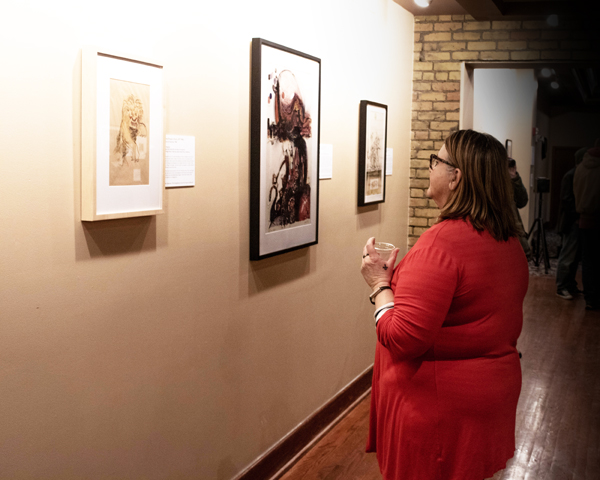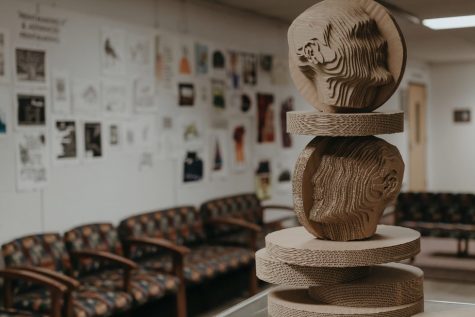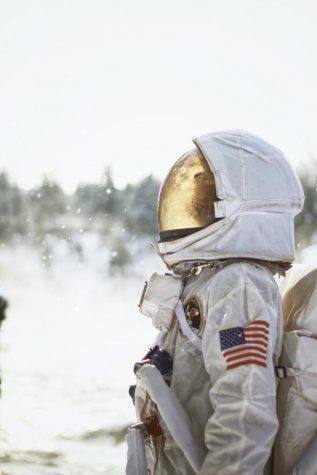UND Art collections showcases new exhibit
Fables, Insults, and Reverence: The Animals of UND Art Collections.
January 29, 2019
Crossing the street on the cold January night towards the Empire Arts Center one could see that the place was abuzz with excitement. On Tuesday, Jan. 22 the Empire Arts Center held the opening of the UND Art Collections new exhibit, Fables, Insults, and Reverence: The Animals of UND Art Collections. This exhibit features a variety of artwork showcasing animals and their relationship to humans.
The pieces vary from political satires to images that look so realistic they could be plucked directly from history. Featured works such as William B. Schade’s Wild Hair 57 St. Raven, 1981, dry point. Which portrays a raven whose joints are slowing being replaced with man made hinges and Francisco Goya’s Ya van desplumados, 1799, aquatint, image of plucked chickens with the heads of men are just a few of the pieces in the collection.
After a short while of admiring the artwork, listening to the soft music being played and eating the delicious food at the event, Sarah Heitkamp, the curator of the show, discussed the collection in greater detail. Heitkamp explained how they actually came about creating the exhibit by working on a different project entirely.
While working on creating a digital archive of all of UND’s art pieces, they noticed that they had common themes emerging throughout the years of artwork. One such theme was the use of animals in human roles or the use of animals to represent human concepts and emotions. Thus, it sparked the idea to take a few of those pieces and showcase them in an exhibit in conversation with one another.
“What we’ve been doing is documenting every single piece of artwork the university owns. A lot of it is out on campus, you can see it in various buildings,” Heitkamp said. “We have what’s called a living art museum. So, if you go into the Education building or the medical school, you’ll see it set up like a museum. It’s really great, but then we have an art repository where we store everything else.”
Information like this hasn’t been previously made available to the public, but these databases are inching in the right direction to change that.
“What we are doing is documenting the artwork and uploading it into Scholarly Commons,” Heitkamp said. “If you go to Scholarly Commons you can see the collections broken down by location and some of them are broken down by category and theme to. You can see what we own and search for certain artists if there is an artist you know about and see if we have it.”
The collections readily available to student and teachers alike, allowing teachers to bring amazing resources to their students during class.
“The art history teacher here uses it to find works that she can bring to class that are relevant to what she teaches,” Heitkamp said. “So, it is a really great resource and we are really excited to be able to do it.”
Heitkamp went on to explain that they found these pieces when creating this database and they choose to title the exhibit, Fables, Insults, and Reverence: The Animals of UND Art Collections, because they felt that those words encompassed a lot of what the artwork was doing and it also spoke to the history of how humans have used animals throughout our fables or fairy tales, to how we use them now.
Heitkamp hopes that this exhibition can be used for educational purposes as well as enjoyment.
“A lot of time when we view art or an art exhibition, we just look at the image and then we kind of leave it at that,” Heitkamp said. “So, what I would really like is for the art that we have, whether its in buildings on campuses or down here at the Empire, I’d like it to be used to further our education mission so it can be a discussion catalyst for topics that the art is addressing.”
So, whether you go for educational purposes or simply to see beautiful artwork, head over to the Empire Arts Center and see what this moving collection has to offer. The exhibit is open Thursdays and Saturdays and is free to the public.










